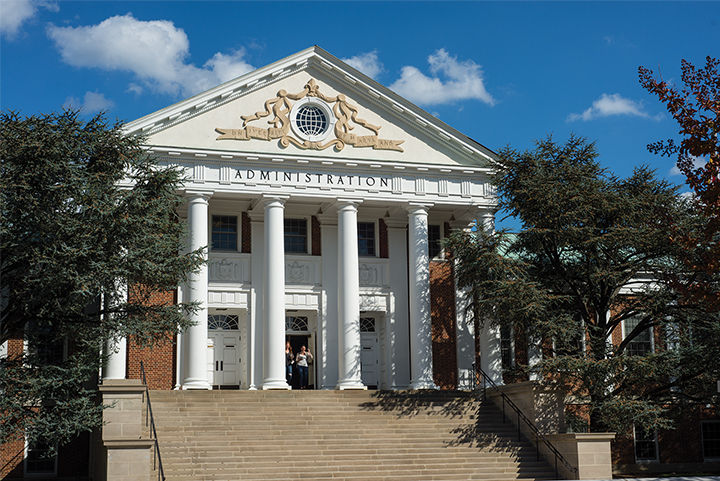A bill introduced in the Maryland legislature Thursday would unite this university and the University of Maryland, Baltimore campus to create one overarching University of Maryland, complete with a research institution, law school and medical school.
Strengthening the strategic partnership between the two higher education institutions would create greater opportunities for research, improve the standing of the university, strengthen the economy and create jobs in research and education, the authors of the University of Maryland Strategic Partnership Act of 2016 argued in the text of their bill.
“The State must plan now for what we know will create the technology and research jobs that will power our economy and ensure that Maryland is the place to go for state-of-the-art research, to take that research and spin it off into the marketplace and to successfully build a company and create jobs based on the education and research opportunities in this state,” the bill’s preamble reads.
With the exception of this university, all Big Ten institutions include medical and law schools under one university umbrella. UMB’s peers also maintain research institutions, according to the text of the bill.
Prior to this proposed partnership, this university launched an initiative with UMB in 2012 called MPowering the State, now “MPower,” designed to facilitate collaboration between the two institutions, particularly in research and academic programs.
Originally, the partnership coupled this university’s public health school and the University of Maryland School of Medicine in Baltimore. It has since expanded to involve UMB’s Francis King Carey School of Law, the Justice and Legal Thought College Park Scholars program and the interdisciplinary law and society minor that launched in 2014.
Through the joint program, research awards totaled nearly $79 million over three years.
The initiative “demonstrates the potential of a reunified major public research institution with the public professional schools in Maryland,” the bill reads.
Putting the partnership into law would make it permanent, said university President Wallace Loh, thus securing the relationship between the two campuses.
When the conversations about a partnership began four years ago, the proposal was a complete merger: creating one university with one president. The proposal never came to fruition, and instead MPowering the State was created.
The current bill calls for two presidents but also grants the Board of Regents the power to conduct a search for one president for both campuses, should one of the current presidents step down.
“It says that someday, if the Board of Regents wants to have one president, fine, and if they don’t, that’s fine too,” Loh said. “In the meantime, we’re going to continue doing the joint activities that benefit students and benefit the state. We’re going to continue what we’ve done the past four years — except that, if the bill passes, we’re going to expand on that and build on the successes.”
This university and UMB “enjoy a close, collaborative and productive partnership under University of Maryland: MPowering the State,” UMB spokesman Alex Likowski wrote in an email. “We already do so much together with UMCP. It will be fascinating to see what new collaborations might come from this.”
After closely following the MPower program and its “phenomenal” successes, state Sen. Bill Ferguson, the bill’s co-sponsor, started a conversation about the potential merger on a visit to College Park over the summer.
“I brought it up; I said, you know, ‘I really think there’s a huge benefit to both institutions if there was a stronger alliance between the two,'” Ferguson said. “A stronger relationship is only to the advantage of both institutions.”
In the past, Ferguson said, there had been some hesitation from Baltimore City about combining the two campuses. Now, though, Ferguson described a sense of the city’s readiness to move forward.
“Baltimore City is in a different place now. It’s more willing to accept new ideas, particularly after seeing the benefits of MPower and what a strong partnership can create,” Ferguson said. “There’s real evidence that a stronger alliance would enhance both of us.”
Student Government Association President Patrick Ronk praised the bill’s proposal and cited the MPower program and its success as the “first step” to the partnership.
Should the two campuses pool their resources, Ronk said, it would raise the national profile and prestige of the university.
“I’ve always thought it was kind of weird that UMD doesn’t have a medical or law school of their own; most Research I institutions and state flagships do,” Ronk said. “In a lot of ways, I think uniting them makes a lot of sense. It will be a good thing for both College Park and University of Maryland, Baltimore.”
In addition to combining the two campuses, the bill would create a Center for Maryland Advanced Ventures, which would pursue funding through research grants, and a University of Maryland Center for Economic and Entrepreneurship Development.
All in all, Ronk said, the proposal would benefit both campuses and create a stronger flagship university for the state.
“It would unite resources together, making it easier to apply for research money, easier to share grants, share funding, increase collaborations between undergrads and grads,” Ronk said. “And frankly, combining both universities for rankings certainly doesn’t hurt.”



